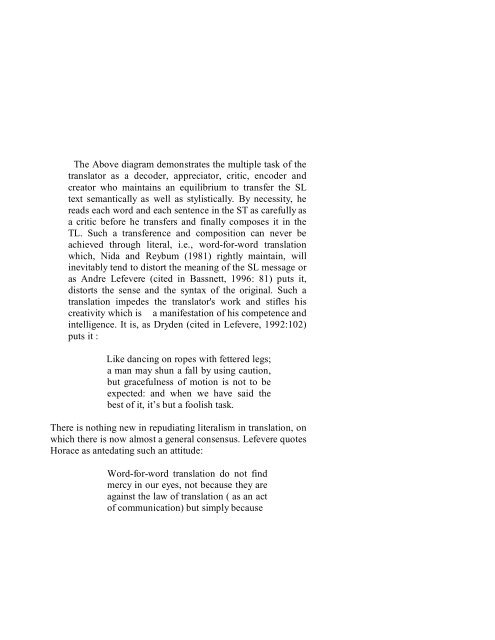424_2061_A.B.
424_2061_A.B.
424_2061_A.B.
- No tags were found...
You also want an ePaper? Increase the reach of your titles
YUMPU automatically turns print PDFs into web optimized ePapers that Google loves.
The Above diagram demonstrates the multiple task of thetranslator as a decoder, appreciator, critic, encoder andcreator who maintains an equilibrium to transfer the SLtext semantically as well as stylistically. By necessity, hereads each word and each sentence in the ST as carefully asa critic before he transfers and finally composes it in theTL. Such a transference and composition can never beachieved through literal, i.e., word-for-word translationwhich, Nida and Reybum (1981) rightly maintain, willinevitably tend to distort the meaning of the SL message oras Andre Lefevere (cited in Bassnett, 1996: 81) puts it,distorts the sense and the syntax of the original. Such atranslation impedes the translator's work and stifles hiscreativity which is a manifestation of his competence andintelligence. It is, as Dryden (cited in Lefevere, 1992:102)puts it :Like dancing on ropes with fettered legs;a man may shun a fall by using caution,but gracefulness of motion is not to beexpected: and when we have said thebest of it, it’s but a foolish task.There is nothing new in repudiating literalism in translation, onwhich there is now almost a general consensus. Lefevere quotesHorace as antedating such an attitude:Word-for-word translation do not findmercy in our eyes, not because they areagainst the law of translation ( as an actof communication) but simply because44
















